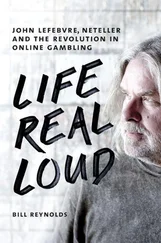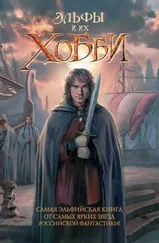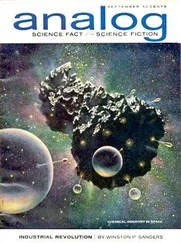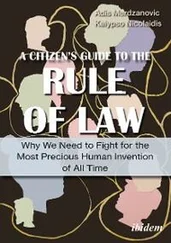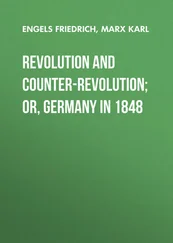As the situation on the beach deteriorated, just after midnight on April 18 Kennedy broke away from a White House reception to hold a quick meeting in tails. Bissell told him the situation was dire, but one way out existed: send in American jets from the carrier Essex stationed off Cuba to clean up Castro’s forces. Bissell always expected that when this moment of truth arrived, JFK, a dedicated Commie hater, would openly commit U.S. forces rather than see the operation die. In fact, since Bissell had read the CIA’s analysis the year before, he knew this was the only way it would work.
But JFK insisted the United States would not become mixed up in the affair. Admiral Burke, chief of naval operations, snapped at the president that the country was already involved. The president stood fast. Apparently, American involvement to Kennedy meant nothing less than having the White House staff actually machine-gunning enemy tanks. But at this point he was not thinking about victory for the invaders. His focus was trying to save himself politically from what he now realized was a huge mistake. Kennedy told Bissell it was time for the invaders to melt into the mountains and continue the fight as guerrillas. Bissell pointed out that since the invaders were sixty miles from the mountains, it was not an option. At this point, on the fifth day of military operations, one can assume Kennedy should have understood the importance of moving the invasion site. A kingdom for Google maps!
E. HOWARD HUNT
Whether he was especially unlucky or just idiotic is not clear, but either way E. Howard Hunt is a two-time loser. First, he played a key role in the Bay of Pigs debacle, as a spy in Cuba trying to organize the rebel political leaders, using the code name Eduardo, a sly attempt to blend in with the Cubans. A decade later, now working out of the basement of the Nixon White House, presumably under his real name, he led the botched Watergate break-in that turned a second-rate crime into the greatest presidential scandal of all time. A good hint that his failures were of his own making comes from the company he kept. His key sidekick during the Cuban debacle was Bernard Barker, the very man who was caught red-handed in the Watergate hotel on that fateful night. With him was the Cuban Eugenio Rolando Martinez. Both men had address books with Hunt’s name and phone number alongside the note “W. House.” How anyone was able to then link the robbery to the White House with those paltry clues is unknown. As one CIA colleague said, Double Trouble Eduardo had consistent judgment. “It was always wrong.”
Kennedy agreed to one concession, allowing jets from the Essex stationed off Cuba to escort the B-26s as they attacked the Cuban airport in hopes of knocking out the few Cuban planes that had been terrorizing the invaders. The jets were not to engage the enemy, but just fly alongside the bombers so as to discourage Castro’s planes from shooting the B-26s. The Cubans, however, refused to fly the planes because it was viewed as a suicide mission, so American volunteers — mostly Alabama Air National Guard pilots who had been training the Cubans for the CIA — took the controls. In an invasion that was not supposed to have any U.S. forces, American navy planes were escorting American planes with American pilots to attack Castro’s air force.
In another crowning moment of deskbound operational brilliance, CIA planners failed to realize that Cuba and Nicaragua, where the B-26s were based, were in different time zones. As a result of this oversight, the bombers arrived an hour before their navy escorts, and four were shot down by the same handful of Cuban fighters flying on duct tape and hope. Even the time zones were working for Castro. The rebels held on throughout all of Tuesday, but the situation remained hopeless. By dawn on Wednesday, April 19, the fight was lost. Castro’s troops tightened the noose on the rebels. That afternoon, Lynch, who had stationed himself offshore shortly after the landings and assumed the role of de facto rebel field commander, took command of a small landing craft packed with ammuniton and guided it toward shore.
But it was too late. Before he could land, the rebels gave up. Their leader, Pepe San Roman, radioed Lynch that he was destroying his communications equipment and heading for the swamps. Brigade 2506 was no more. The survivors stumbled around the swamps until rounded up by Castro’s men a few days later. The spin continued. The exiled Cuban leaders, having learned the PR lessons from their CIA trainers all too well, declared that the invasion was really a small supply operation that had failed to achieve all its objectives. And they swore up and down the United States was not involved.
In all, 114 rebels died and 1,189 were captured. Castro returned most of the captors to the States in late 1962 in exchange for $53 million in drugs and food.
In a ceremony held on December 29, 1962, at the Orange Bowl in Miami to honor the returning fighters, Kennedy prasied their courage and vowed that the rebels’ flag would one day fly over a Castro-free Havana.
Eight presidents later, the wait continues.
From the ashes of Kennedy’s biggest disaster sprang his greatest triumph. To protect Cuba, the Soviets parked some nuclear hardware in Fidel’s backyard. When discovered in 1962 by the United States, Kennedy confronted the Soviets and forced the Russkies to back down and remove the missiles. The Cuban Missile Crisis stands as the world’s closest known moment yet to a nuclear exchange.
The failure of the invasion provided Castro with a good cover story to imprison tens of thousands of dissenters, further strengthening his hold on power. Even after the Soviet missiles were removed, Castro has kept a vigilant, paranoid guard against external enemies. Since 1962 he’s been waiting for the next invasion to overthrow him.
And for Richard Bissell, the genius behind the whole mess? Bissell left the CIA, with a national security medal pinned on him from Kennedy, and moved back to Hartford, Connecticut, where one can be quite certain no day is ever as exciting as running black ops for the agency. Bissell died in 1994.
THIRTEEN.
THE SOVIET INVASION OF AFGHANISTAN: 1979
Cars have cruise control. Planes have autopilot. And empires have auto empire control.
Without thinking, empires will respond to the same situation the same way time and time again, disregarding other options that might be better suited. It worked once before, their thinking goes, so let’s not mess with the plan. When two superpowers run on reflex and fight a pilotless war against each other, however, the situation is ripe for disaster.
In December 1979, the Soviets invaded Afghanistan in order to prop up its failing Communist regime. Just like in the old days when the Red Army crushed opposition in Hungary in 1956 and Czechoslovakia in 1968, the Russians felt that the philosophy of Marx and Lenin was best taught by tanks machine-gunning the populace, repeating as necessary.
In knee-jerk response, the Americans stepped in and supported anyone, absolutely anyone, who was willing to fight the hated Soviets. The result was a long, bloody, and destructive war that left Afghanistan in ruins, rapidly put the Soviet Union on the fast track to disappearance, and created a whole new brand of enemy for the United States, just in time for the demise of the USSR.
Two superpowers fought it out, in the last great battle of the Cold War. Both lost more than they could have possibly imagined.
William Casey— head of the CIA under Ronald Reagan, the devout Catholic took command of the U.S. effort to supply the Afghan rebels and pumped billions into killing Russians.
Читать дальше

